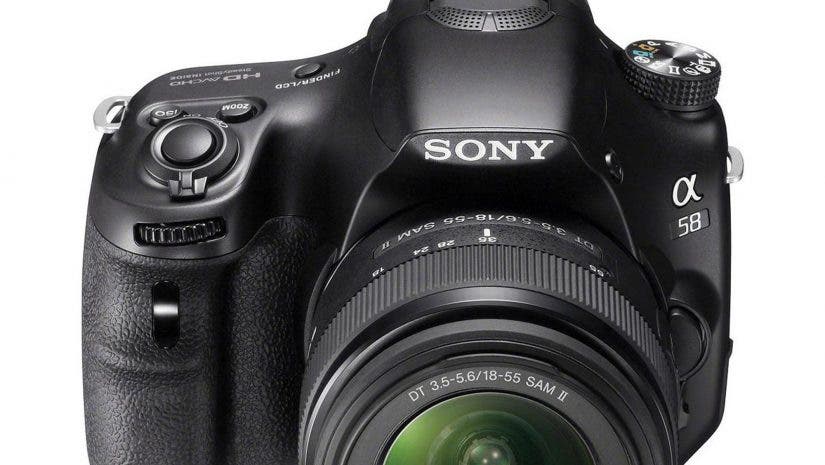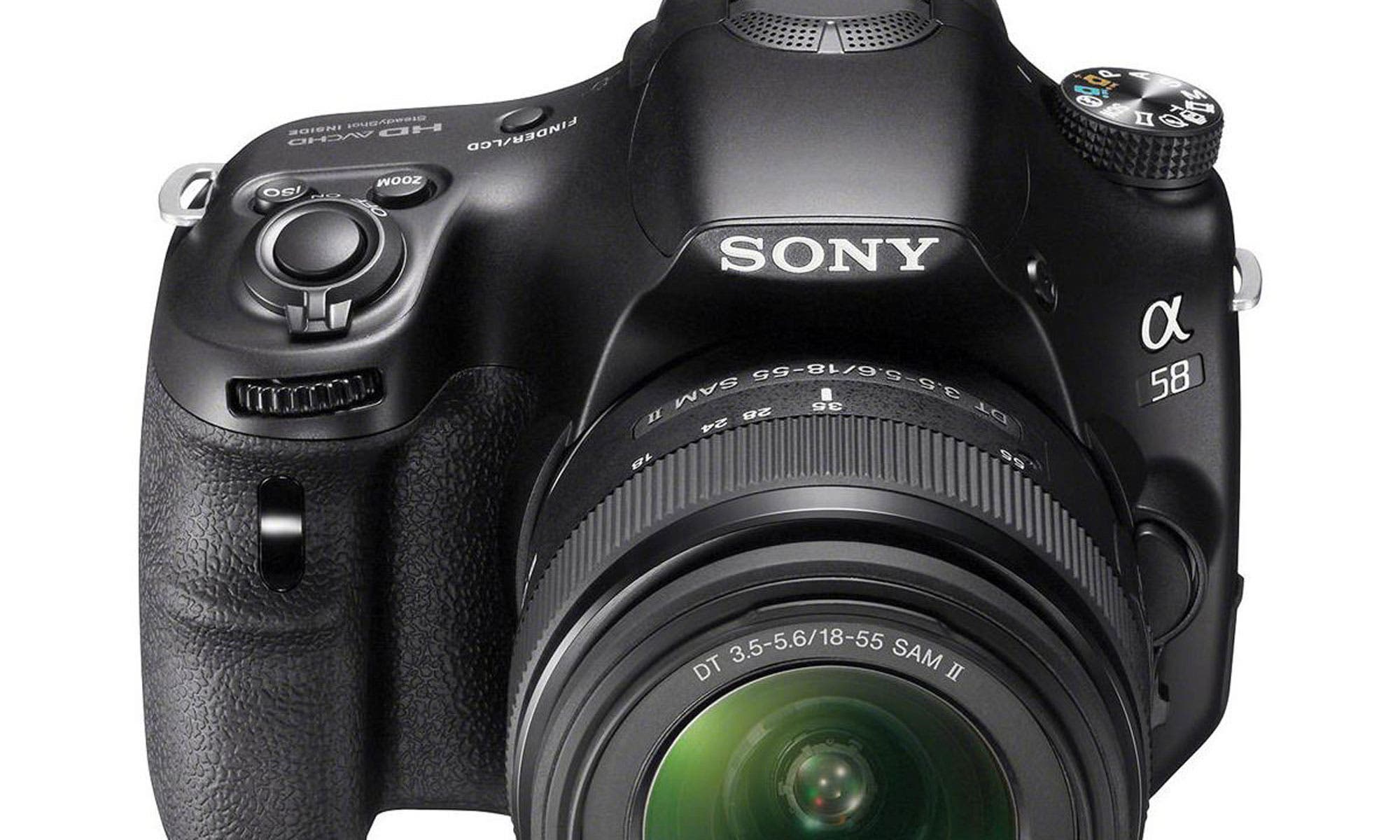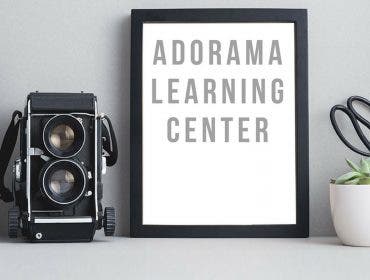Sony today unveiled two new interchangeable-lens cameras and a trio of specialized compact cameras. The Sony SLT-A58 is Sony’s new entry-level DSLR, while the Sony NEX-3N is claimed to be the world’s smallest, lightest interchangeable-lens camera. Let’s take an in-depth first look at these two intriguing cameras, as well as the Sony HX300, a superzoom bridge camera with a 50x optical zoom lens, the Sony TX30, a waterproof compact camera that can be submerged down to 33 feet, and the Sony WX300, a fashionable compact digital camera with a 20x zoom lens.
Note: All new Sony cameras and lenses are available for pre-order at Adorama. Orders will be filled on a first-come, first-served basis. Credit cards will not be charged until orders are shipped.

First Look: Sony SLT-A58 DSLR
With its 20.1MP APS CMOS sensor, the Sony SLT-A58 claims may not be the highest resolution camera in the entry-level DSLR category, but Sony claims that the camera’s slightly larger sensor will produce better overall image quality, especially in low light and high ISOs. The Sony SLT-A58 joins Sony’s lineup of Translucent Mirror Technology cameras, which are interchangeable and have fixed reflex mirrors that let most of the light through to the sensor, but the eye-level viewfinder shows an image projected by a high-resolution LCD monitor, rather than an optical one. This allows Sony to design their cameras to offer better autofocus performance, and multi-frame shooting.
Key Features:
- 20.1MP APS sensor
- 8fps continuous shooting
- Translucent Mirror TEchnology
- 1080/60i/24p HD video
- 15-point AF sensor with 3 cross sensors
- 1.2 million dot resolution EVF
- 2.8-inch flip-out 460k LCD monitor
- ISO range 100-16000
- Auto object framing
- SteadyShot Image Stabilization
- Auto HDR
- Picture Effects
- Multi-frame noise reduction
- Handheld Twilight mode
Since the Sony SLT-A58‘s mirror is locked in place, this allows for faster focusing and multi-frame shooting, since the mirror simultaneously directs light to the imaging sensor and to the phase detection AF sensor. Users track subject movement and lock on autofocus via the AF sensor array as it moves through the frame using Object Tracking AF. The camera will capture up to 8fps, fastest in its class, in continuous advance priority AE, and can quickly record up to six images in a fraction of a second to combine them for multi-frame noise reduction as well as for combining 3 different exposures for automatic in-camera HDR capture.
The Sony SLT-A58 continues that company’s tradition of building image stabilization in the camera body instead of the lens. This allows for greater stabilization compatibility with both Sony A-mount lenses as well as older Minolta Alpha lenses. Sony claims 2 to 4.5 additional stops of exposure are possible. Low-light performance is enhanced further thanks to a native ISO range of 100-16,000, expandable to ISO 25,000.
The 2.7-inch flip-out LCD screen is relatively modest in size and resolution (460k dots), but Sony didn’t compromise when designing the electronic viewfinder, which offers 1.2 million dot resolution and provides 100% frame coverage. The Sony SLT-A58 offers 11 imaging modes and 15 effects, as well as a Hand-Held Twilight mode, in which the camera captures and combines six images in a fraction of a second. The camera merges the images and eliminates hand blur and slight differences in framing for what Sony claims is highly detailed low-light images.
Sony claims its sensor can record Blu-Ray quality video in AVCHD format, with the ability to record in either 60i or 24p. Users could also record MP4 format videos in 1080/30p. The Sony SLT-A58 kit with standard zoom lens will be available from Adorama for $599.99.

Sony also introduced three new A-mount lenes:
- Sony 70-400mm f/4-5.6 G SSM II telephoto zoom, with improved optics and faster AF, for full-frame and APS sensor Sony DSLRs. It is designed especially for action photography. It will be available from Adorama for
- Sony 50mm f/1.4 ZA SSM Carl Zeiss Planar T, a standard prime lens for full-frame and APS sensor Sony DSLRs. It is designed for portraits and general photography, and will be available from Adorama for .
- The Sony DT 18-55mm f/3.5-5.6 SAM II second-generation kit zoom, boasting improved rear elements that reduce ghosting and flare. It will be available from Adorama for .

Sony NEX-3N
At 4 3/8 x 2 1/2 x 1 3/8 inches, Sony says the Sony NEX-3N is the world’s smallest interchangeable-lens camera, despite its APS-sized, 16MP CMOS sensor. In fact, it is slightly smaller and lighter than its smaller-sensor competitors, which is an impressive engineering feat. Despite its diminutive dimensions, it offers an extensive feature set for a starter interchangeable-lens camera.
Key Features:
- 16.1MP APS-C CMOS sensor
- Full HD Video at 60i and 24p
- Built-in flash
- ISO range 100-16,000
- Intelligent AF
- Auto object framing
- Burst mode up to 4fps
- Power zoom lever for one-handed operation
- Sold with New 16-50mm kit lens
- 15 Picture Effect modes
- Superior Auto mode
- Anti Motion Blur
- Hand-Held Twilight mode
- Face detection/smile shutter
- Battery life: up to 480 shots per charge
The Sony NEX-3N is designed for anyone who wants the flexibility of an interchangeable-lens system but may be intimidated by the size and complexity of DSLRs or more advanced MILCs. While it offers a sophisticated auto-everything mode called Superior Auto, which Sony says makes shooting stills and videos as easy as it would be when shooting with a compact camera. The camera automatically adjusts for different shooting environments, and will employ Auto HDR and Hand Held Twilight modes when deemed appropriate.
The Sony NEX-3N‘s 16MP APS sensor has a 100-16,000 ISO range, and can capture Blu-Ray quality AVCHD format videos at 60i and 24p, and at 30p when recording in MP4 format. Anti-motion blur is built in and designed for low-light shooting; it combines 6 images shot in rapid succession to minimize shake and grain.
Other cool features include: Auto Object Framing, which uses Face Detection and Tracking Focus to recompose and fill the frame with the subjects; Photo Creativity, which controls background defocus, brightness, color, and vividness; and Creative Style, which lets you choose from Standard, Vivid, Portrait, Landscape, Sunset or Black and White.
Sony has also developed a new 16-50mm lens, sold together with the Sony NEX-3N as a kit. It collapses down into a pancake-length lens when not in use for easy storage, making this a good travel camera.
The Sony NEX-3N kit with the 16-50mm lens will be available in Black or White from Adorama for $499.99.
3 New Compact Cameras
In addition to the NEX-3N and A58, Sony today introduced 3 new compact cameras:

Sony DSC-HX300: A self-contained superzoom camera, the HX300 has a 50x optical zoom lens and 20.4MP sensor. Key features include Optical Steady Shot (essential when shooting at longer focal lengths), a flip-up 3-inch 921k resolution LCD, full 1080/60p HD video capture, 10fps burst rate, 360-degree Sweep Panorama and a built-in pop-up flash. While the camera has manual controls it also has Sony’s Superior Auto, which automatically sets exposure and other settings depending on the scene. The Sony DSC-HX300 will be available in from Adorama for $499.99.

The Sony DSC-WX300 is a fashionable compact digital camera with a 20x optical zoom lens and built-in Wi-Fi. Features include an 18.2MP sensor, 1080/60i AVCHD video capture, optical image stabilization, up to 10fps burst mode, creative Picture and Beauty Effects, and Sweep Panorama. Improved battery life has been rated at 500 photos per charge. The Sony DSC-WX300 will be available in Black, Red, and White from Adorama for $329.99.

Finally, the Sony DSC-TX30 is Sony’s latest waterproof camera. It is submergeable down to 33 feet, and is dust-proff, freeze proof (operates down to 14 degrees f) and shock proof (can withstand drops down to 5 feet). Features include a 3.3 OLED touchscreen with 1.299k dot resolution, an 18.2MP sensor, 2-way image stabilization; up to 10fps burst rate; focusing as close as 1/3 inch; a front LED light helps illuminate the subject. Movies are recorded in 1080/60i AVCHD format. The Sony DSC-TX30 will be available from Adorama for $349.99.



